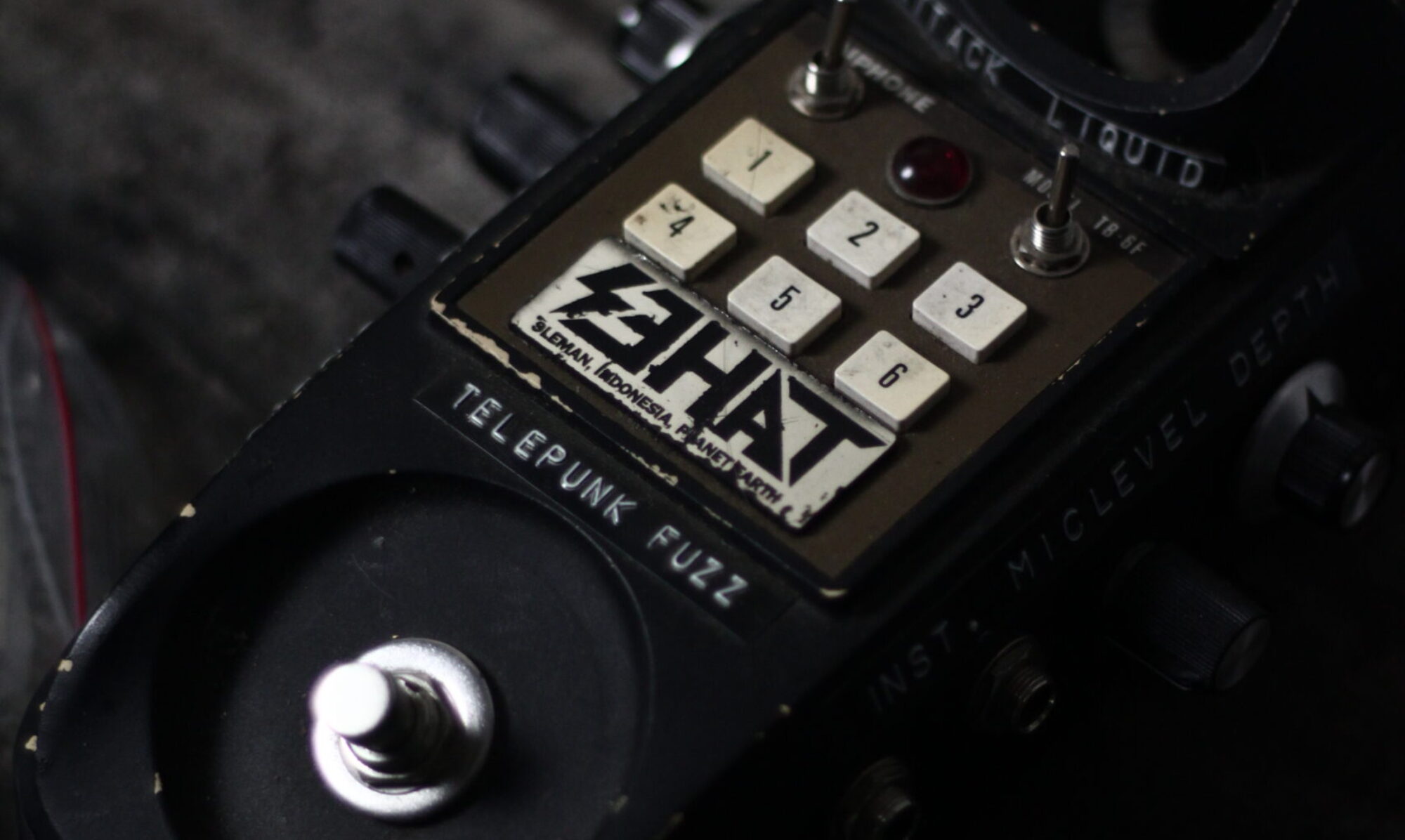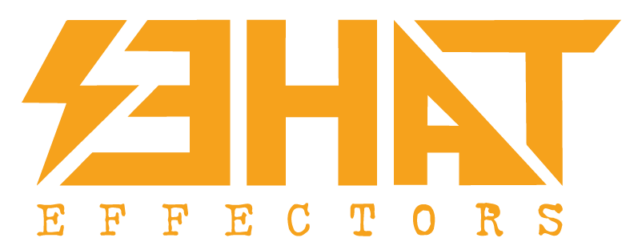Electrofoods Pedals: Low Level Made Up Effects Pedals? FUCK NO!

Hey my friend, were finally own our own webstore, after our reverb account banned three times, so we made our own webstore. You know guys I really wanna say thanks, because you are first people who own Sehat Effectors pedals, we never sold our pedal before,hahaha..after you buy our pedal people trust us, one again thanks lot. Lets talk about you guys, in my opinion Electrofoods Pedals is “MONSTER OF DIRT TONE” damn heavy distortion pedal, and its low noise, what is the idea and concept of those pedal?
Matt: Oh man that’s so great to hear. Honestly, I had no idea you’d never sold a pedal when I hit you up for that Moisture fuzz. But I’d never seen or played anything like it (still haven’t!), and your instagram was and is one of the best things i’ve ever seen on there. Absolutely thrilled to have helped you out, man, and I’m so happy seeing you continue to kick ass and take names since then.
Haha the “monster of dirt tone”! I love it. That’s high praise. A lot of it on my end comes from playing guitar into exclusively bass amps for the first 5 or so years I played guitar. I always wanted alllll the low end and all the fuzz. I had a black Russian M*ff that I beat the hell out of, and used it to push the various amps I was playing through (Acoustic 140, Peavey Musician, Peavey Alphabass mostly), and I loved it, but it was always super noisy and I eventually wanted a little more out of it. One of the first circuit-y things I ever did was mod that thing. I barely knew what i was doing but dug what I got out of it. Eventually, I started designing my own circuits from scratch (because I never do anything the easy way), and not long after I met Carl and he introduced me to the Harmonic Percolator, and we started a band (Booklegger) with the explicit intent to bi-amp with a guitar and bass amp each for both me and the bassist. We spent years messing with that Perco circuit, trying all kinds of mods and features and additions and started from basically from scratch several times, all of them being torture tested through various incarnations of Booklegger rigs. We love the Pigpile’s final form, but it was never the thing that could replace the thick, solid grind of the black Russian for me. So even before we finished I started experimenting with other circuit ideas…
I had just gotten into using JFETs at the time, so I decided to make an all JFET fuzz/distortion thing (the Eye of Ra) by designing a circuit from scratch…and we screwed around with that thing for years before we settled on its final version (which added two more JFETS lol). Circuit-wise the concept for that one is bananas and there were a lot of subtle gotchas about how JFET mu-amps work with asymmetrical clipping that we had to figure out on the fly since we didn’t have any similar reference points. And…we love that one too, and it was close… but it still wasn’t quite the black Russian replacement I was looking for (though me and the bassist in Booklegger have basically had one or two Ras on our boards continuously since the first proto).
So…I gave up and thought, “Well, I’m just going to have to start with a M*ff circuit, but if I’m going to do it…I’ve gotta do it my way.” There are SOOO many m*ffs out there…and so many of them are SO similar. By this point I’d gotten much better at circuit simulation, and I basically wanted to make the most bonkers m*ff anyone had ever seen, but with enough controls and carefully dialed in eq to let it be tamed and not just produce garbage harmonics all the time (though it can do that too if you want it). I spent most of the prototyping process for that one in simulation, though there were still a bunch of tweaks to make after the first proto was built, and we were dialing it in by ear. Funny thing is Carl’s never been a m*ff fan, really. But we managed to make one he really likes, even while it’s ALSO exactly the thing that I had been looking for. Since then…that’s pretty much been our MO: Whatever the pedal is, take it further than anyone expects in as many directions as we can, but with really functional controls that are as intuitive as possible. Also, the Pigpile and Ra both taught us to obsess over the details, and how even the smallest things we don’t like about a proto’s behavior, sound, attack, or whatever…probably has a cause and a solution somewhere in the circuit. Haha and related to that last statement, we have no patience for “mojo” or whatever magic people seem to ascribe to vintage stuff. Some old components ARE unique and CAN do unique things. But it’s not because they’re old. And unless you’re using them in a specific way that highlights that difference, you’ll never be able to tell no matter how warm and fuzzy it makes you FEEL inside knowing you have 40 year old resistors in your pedal..or whatever. I bet a lot of vintage components “seem” to work differently because their tolerances are so bad. It’s not mojo it’s a random mod you didn’t know you made!
I love this quote “We have zero tolerance for hate or discrimination. If you are a white nationalist, nazi, misogynist, homophobe, transphobe, proud boy, or any other flavor of regressive dipshit, fuck off. Please buy someone elses pedals to make your shitty, boring music.“ tell me about that.
We are (and many of our loved ones are) members of various marginalized groups, and we wanted to make it clear where we stand. Inasmuch as we have any kind of platform we want to use it for good, and for explicitly denouncing oppression and hate.
What is the best “metal distortion” pedal and why?
Matt: Haha oh man this is such a loaded question. So many types of metal, so many types of distortion/dirt. I suppose I’m going to have to go with some flavor of rodenty distortion…the R*t. So often when I hear a band whose guitar tone is just unnnnggghhh amazing (Amenra, Neurosis, Windhand to name a few examples) and I think “fuck what are they using to sound like that?!” …it turns out there’s a R*t or something based on it involved. That’s part of why I was finally like “Ok, we’ve got to make one” …haha, of course again…we had to do it in our own way i.e. designing a discrete opamp just for that pedal haha.
Lets talk about your favourite guitar, Peavey T60? Any other?
Matt: Holy crap I love old Peaveys. Haha. Around 2007, after playing nothing but old Teiscos and the like for a few years I started looking for a…not better…let’s say more robust guitar. Something with adjustable intonation anyway haha. I ended up with a Peavey Patriot that I’d bought on ebay for $80. This is a rando pic from the internet but it looked almost exactly like this:

Oh man what a great guitar, light but also rock solid. I am ROUGH on guitars haha. I used to do reverse neck-bends on my Patriot…I’d hold the body of the guitar behind the bridge with my right elbow, set the neck joint on my hip, and pull back on the neck enough to pull the string up a half step haha. I never broke it in half lol and it even went back into tune afterwards! Anyway, I loved it so much I started looking for other old Peaveys, and it wasn’t long before I acquired the T60. Once I had the T60 the Patriot didn’t get used much, and I ended up donating it to an auction to raise money for a friend’s top surgery. And it went to someone who had dreamed of owning a guitar, too, so I know it’s being well loved. I miss that guitar but I don’t regret the decision one bit. That T60 is great though…strung with flatwounds, the largest being an .070” dia which is actually a bass string with a big bass ball end haha. It’s been in the Booklegger tuning for years now: B-F#-B-F#-B-C#. Rewired it so the phase switch is a series/parallel switch, but I pretty much keep it in series all the time. Other guitars…the latest teisco I rebuilt and rewired. Made a brand new stainless steel pickguard for it, swapped the tuners, made a new nut for it, wired it with a series/parallel switch, a master volume knob, and that’s it! Also a big Kay Old Kraftsman hollowbody that I used in a couple old bands. That thing’s pretty damn cool.
Carl: So my obsession with Peavey started early. The first electric I bought was a Peavey Predator, basically a strat knock off. I bought a Patriot off a bandmate a few years later. I never paid too much attention to Peavey, it was just what I could afford. I modded both guitars pretty heavily, multiple times. I got a Mexican Tele that I didn’t know I wanted until someone offered it to me for $40. That was my main guitar, until I was doing research on getting a new guitar. I somehow stumbled unto the T60s, read about how they were made (laminate necks, first mass produced guitars using CNC machines, the electronics, as you role the tone up passed 6, it starts to bleed out one of the coils-super handy for studio, or especially live-you can have a tiny twist and tune your guitar to the room, without having to adjust your pedal or amp eq too drastically). I have a tone of other guitars, but the T60 is one of the most comfortable body shapes I’ve ever played. When me and Matt first met, we bonded over playing T60s into bass amps, it was love at first gear talk! Since then I’ve bought 3 Peavey Foundations and a T40.
Three words describe Electrofoods pedals?
Obsessively unreasonable versatility

